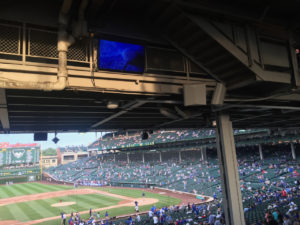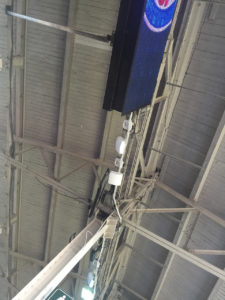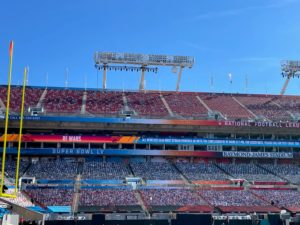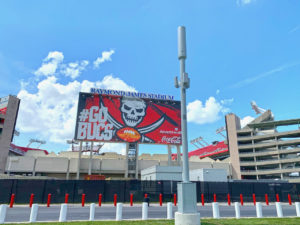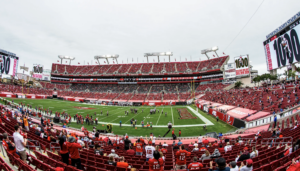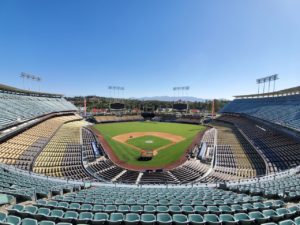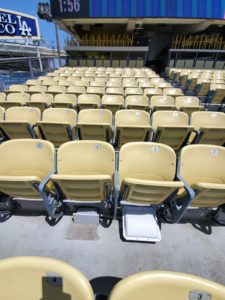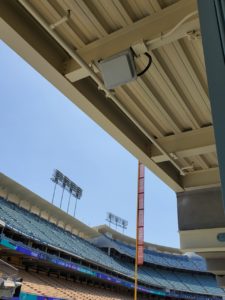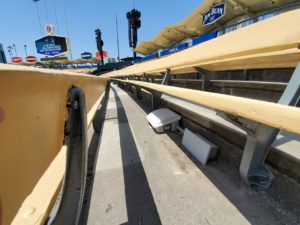In an announcement today, Extreme and MLB said the deal would bring in-stadium Wi-Fi gear as well as Extreme’s network analytics software to at least 16 stadiums by 2026.
According to Major League Baseball, the Extreme deal represents the latest step for the league’s “technology consortium,” a plan started in 2014 where the league brought together a consortium of technology and service providers to more quickly bring better connectivity to MLB venues through pre-arranged and shared pricing structures. (In the first version of the consortium plan, Cisco was the preferred Wi-Fi gear supplier.)
Truman Boyes, MLB’s senior vice president for technology infrastructure, said that adding Wi-Fi 6 technology to the consortium offerings was driven by the continued increase in network data consumption by fans at ballparks.
“We’ve seen growth [in network usage] ramp up year after year,” Boyes said.
And while an earlier version of the Wi-Fi 6 rollout plan was set to start last spring, Boyes said that the Covid pandemic and its subsequent closing of almost all venues to fans in 2020 actually helped MLB solidify its plans.
“We did have some delays [due to the pandemic] but because there still wasn’t an actual standardized approach to Wi-Fi 6 at this time last year, it became a good time to wait it out,” Boyes said. And after evaluating all the equipment providers in the Wi-Fi space, Boyes said Extreme’s experience in large-venue Wi-Fi networks helped make Extreme MLB’s choice based on technical merit.“When it comes to networks of 20,000 to 40,000 [users], it’s a totally different landscape,” Boyes said. With Extreme’s experience in NFL-size venues, he said, “they know how to make it scale.”
According to Boyes, 10 of the network deployments are expected to be completed by the end of the year, with Fenway’s deployment scheduled to be live by opening day. (See full list at bottom of story)
MLB deal follows NFL deal
The “official” Wi-Fi deal adds another win to Extreme’s sports-industry ledger, following the company’s current similar deal with the NFL. Next year will be Extreme’s ninth season as the official Wi-Fi supplier to the NFL, where 12 of the 30 venues use Extreme gear exclusively for Wi-Fi. Extreme’s current deal with the NFL lasts until March of 2022, according to the NFL.
Like its NFL deal, Extreme’s contract with MLB does not require venues to use Extreme equipment; it simply provides teams with a league-approved deal that most likely has economics that are potentially more favorable than those available outside the consortium pricing, given that Extreme is both a supplier and a sponsor to the league.
“Teams can join if they want to share in the benefits of centralized management,” said Boyes of MLB’s consortium efforts. While 16 MLB teams have committed to the Wi-Fi 6 deal with Extreme, Boyes said there is “interest from other teams” as well. Currently, Boyes said 20 of MLB’s 30 teams have used consortium deals for connectivity in the past.
Extreme currently has two existing MLB customers for stadium Wi-Fi, the Chicago Cubs’ Wrigley Field and the Baltimore Orioles’ home, Oriole Park at Camden Yards. The Orioles’ deal with Extreme had not been previously reported, other than that Verizon had paid for Wi-Fi at the park.
While Extreme has gotten big visibility out of its NFL deal — one which allows Extreme to control the announcement of network-usage results from the Super Bowl each year, even if Extreme gear is not used at the venue — it has also not won any recent deals for new NFL Wi-Fi networks. The two newest NFL venues, SoFi Stadium in Los Angeles and Allegiant Stadium in Las Vegas, both chose Cisco as their Wi-Fi 6 gear supplier.
However, some long-standing Extreme customers in the NFL have recently stuck with Extreme for renovations, including updates at the last two Super Bowl venues, Miami’s Hard Rock Stadium and Tampa Bay’s Raymond James Stadium. Extreme and the Seattle Seahawks were also set to announce a Wi-Fi 6 upgrade to the network at Lumen Field this past year, but that announcement was delayed by the team due to the Covid pandemic.
Wes Durow, chief marketing officer for Extreme, said in a phone interview that Extreme’s focus on analytics makes it a great fit with Major League Baseball, which he said has been out in front of the entire sports world when it comes to emphasizing new statistics as a way to engage fans more closely.
And while acknowledging that a sponsorship with MLB was part of the equation, he said “that’s not what drove this deal. They [MLB] needeed to make a technology decision first.”
Consortium focusing on Wi-Fi
Unlike the past version of the consortium efforts, which included cellular distributed antenna network (DAS) systems as well as Wi-Fi, Boyes said the MLB consortium would “focus on Wi-Fi” going forward.
Part of MLB’s stance of “keeping DAS a little bit at arm’s length for now,” Boyes said, has to do with the complexity of 5G cellular deployments. Unlike 4G LTE cellular, where the top U.S. carriers all used similar spectrum spaces, the early 5G deployments from the top carriers all use different spectrum bands, which doesn’t work with a shared-antenna system.
MLB Stadiums that will get Extreme Wi-Fi 6:
Fenway Park (Boston Red Sox)
Chase Field (Arizona Diamondbacks)
Guaranteed Rate Field (Chicago White Sox)
Great American Ballpark (Cincinnati Reds)
Progressive Field (Cleveland Indians)
Comerica Park (Detroit Tigers)
Minute Maid Park (Houston Astros)
Kauffman Stadium (Kansas City Royals)
Marlins Park (Miami Marlins)
Citi Field (New York Mets)
Citizens Bank Park (Philadelphia Phillies)
PNC Park (Pittsburgh Pirates)
Petco Park (San Diego Padres)
T-Mobile Park (Seattle Mariners)
Busch Stadium (St. Louis Cardinals)
Nationals Park (Washington Nationals)
